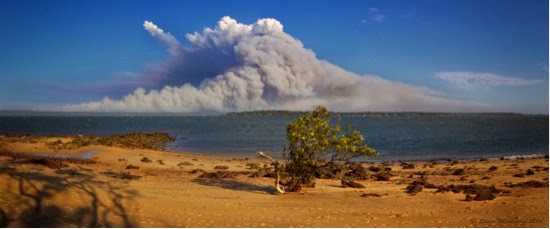Big picture protection
There are numerous threats to waders in Australia and in other countries of the flyway. In many parts of South-east Asia the birds are hunted and there is widespread habitat loss through coastal reclamation and industrial development, especially in China and South Korea. In Queensland, there is inadequate protection of roost and feeding sites and threats from pollution.
Australia is a signatory to international treaties aimed at protecting migratory waders including the Ramsar Convention (Convention on Wetlands of International Importance especially as Waterfowl Habitat) which promotes wetland conservation, and the Bonn Convention (Convention on the Conservation of Migratory Species of Wild Animals) which provides a multinational framework for the conservation of migratory species. In the East Asian-Australasian flyway, 15 of the 22 countries in the flyway have signed the Ramsar Convention. Australia also has special migratory bird agreements with three countries in the flyway - Japan, China and Korea.
 |
| The elusive Beach Stone Curlew photographed on Frenchman’s Beach |
Moreton Bay and 18 Mile Swamp, the longest wetland of its type in the world, are listed as Ramsar sites for special protection and sustainable management. A Shorebird Management Strategy for Moreton Bay was released in 2005 by the Queensland Government. Within Moreton Bay Marine Park, the Marine Parks (Moreton Bay) Zoning Plan 1997 contains provisions for managing shorebirds. The Queensland Parks and Wildlife Service (QPWS) is the agency responsible for the management of the marine park including its shorebirds and their habitat. In addition, state and regional coastal management plans provide a framework for managing shorebirds in coastal areas including the marine park. Outside the marine park, the responsibility for protecting shorebirds is a matter for landholders, local governments and other land managers.
FOSI members are very concerned to ensure that the threats to Stradbroke’s shorebirds are recognised and addressed. While it’s great that 18 Mile Swamp has been included in the new national park, excessive water extraction for mining and water reticulation poses an ongoing major risk to 18 Mile Swamp and Stradbroke’s ground water systems. The integrity of 18 Mile Swamp is at risk from deep dredge mining at Enterprise mine next to the swamp and the impact of the Yarraman mine near the northern Key Holes. Shorebirds, especially our resident birds, also face continual threat from vehicles on beaches particularly when driven at high tide or above the high-water mark. Destruction of birds and nests by dogs, cats and foxes and rough human feet is another ongoing threat while the proposed development and release of extra land at Amity and Flinders Beach in the vicinity of key migratory shorebird habitat must be monitored closely to ensure that adequate buffer zones are put in place to protect the bird’s habitat.


